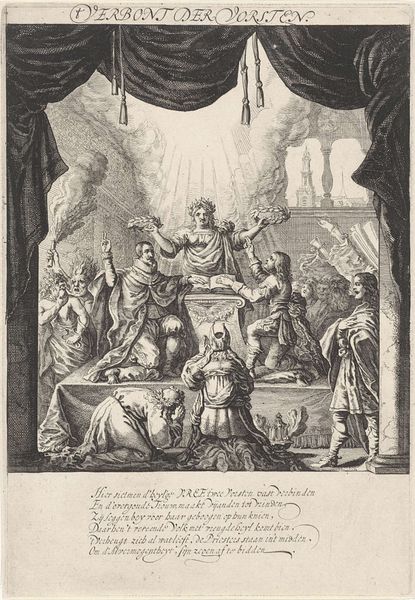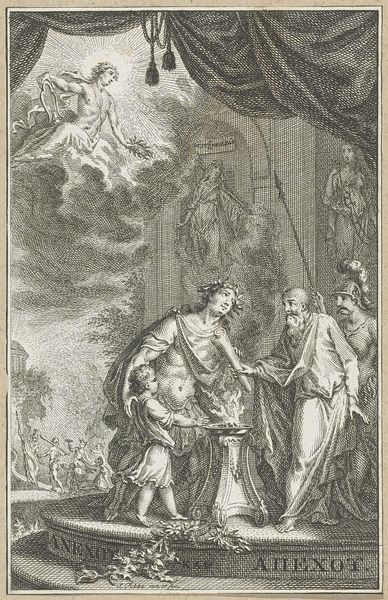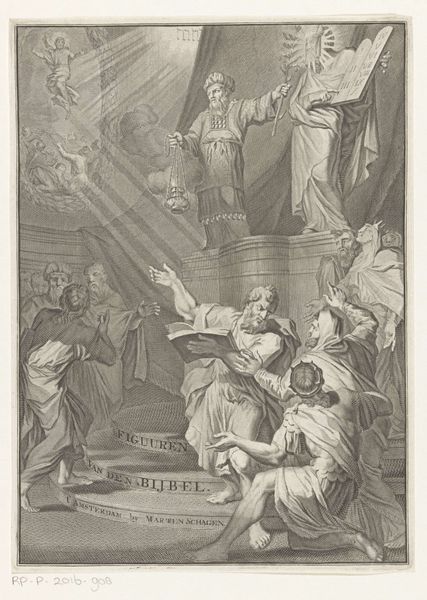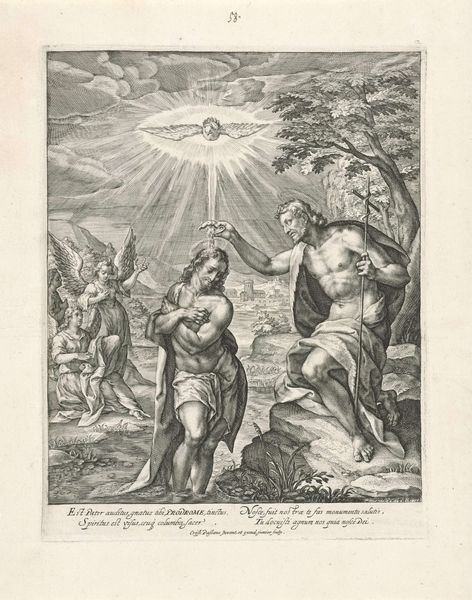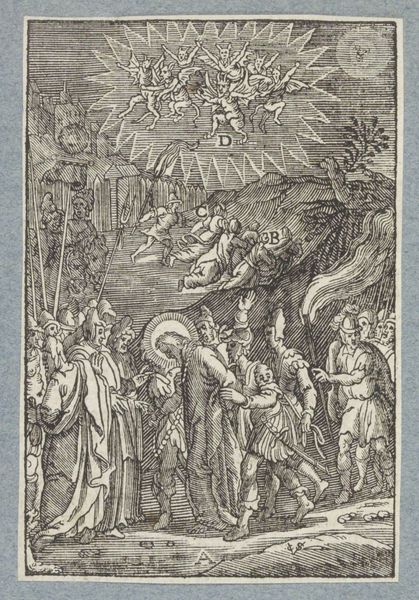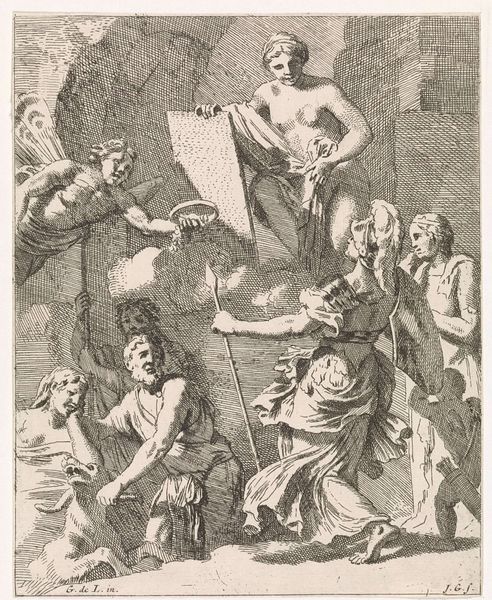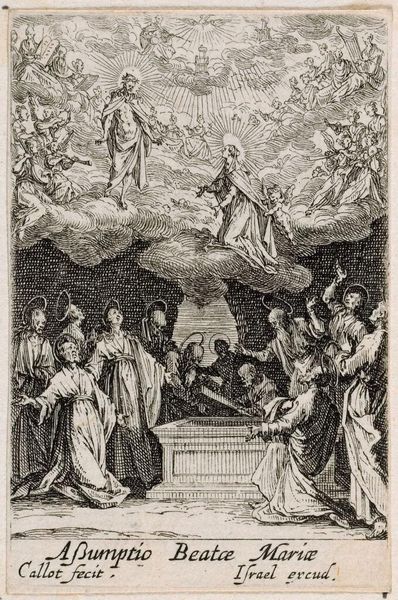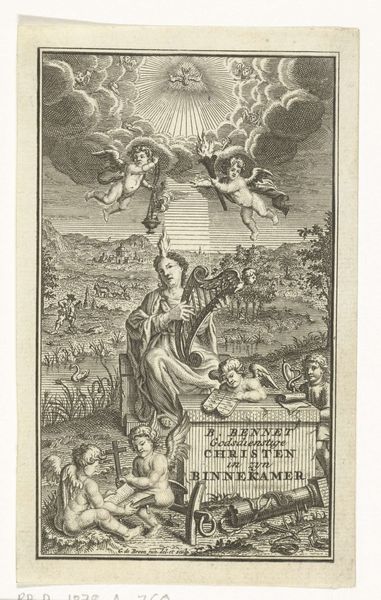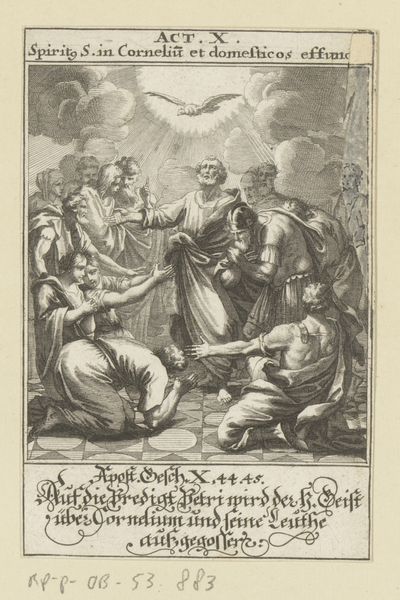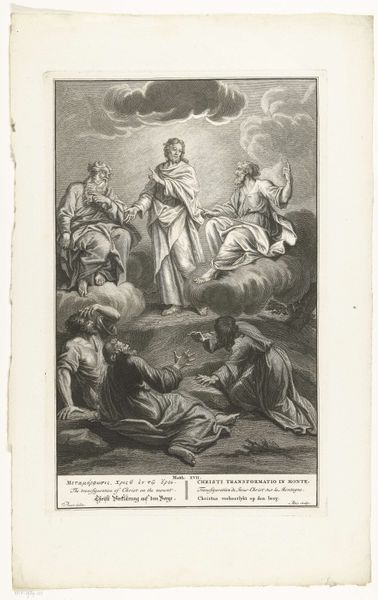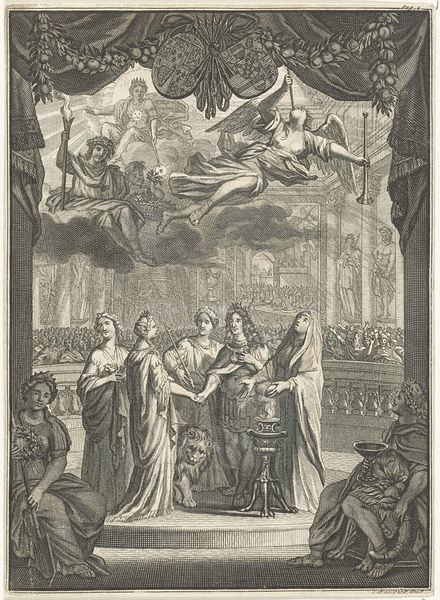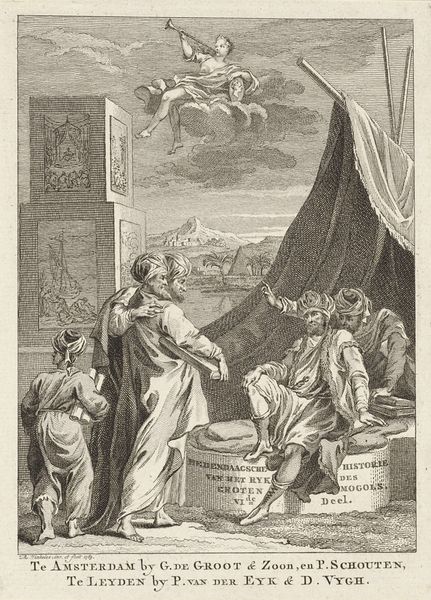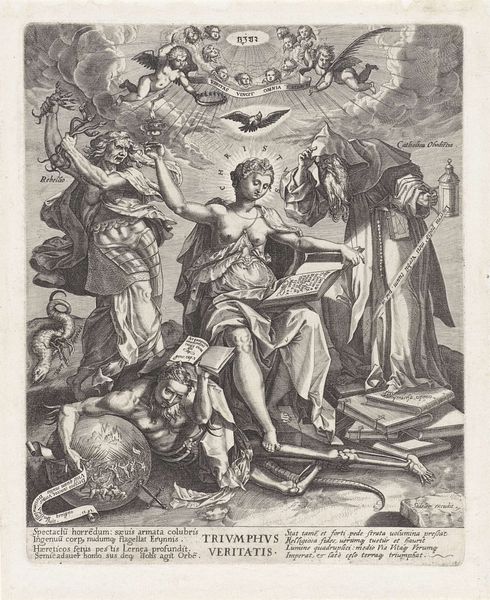
Dimensions: height 142 mm, width 95 mm
Copyright: Rijks Museum: Open Domain
Editor: This engraving, "Brede en de smalle weg," or "The Broad and Narrow Road," by Cornelis Huyberts, dated 1704, is incredibly detailed. The allegorical figures are compelling, but I'm initially struck by the stark contrast between the two paths depicted. How should we interpret this piece through the lens of its time? Curator: This image vividly captures the religious and social anxieties of the early 18th century. Consider the visual rhetoric: the broad road leads to earthly pleasures, symbolized by the debauchery and chaotic figures, a path widely travelled yet ultimately destructive. How does that gate, leading to chaos, strike you in comparison to its counterpart? Editor: Well, it's much more dramatic, certainly. The narrow road's gate is quieter, with just a few figures on a tranquil path toward what appears to be salvation. It seems much less crowded and imposing than the broad path. Curator: Exactly. Huyberts is playing with ideas about piety and morality as powerful cultural forces. These images, popular at the time, reinforced societal expectations through religious and moral teaching. This was less about personal faith, perhaps, and more about how imagery dictates, and perpetuates, cultural norms, don't you think? Editor: That's an interesting way to consider it. It frames the choice between paths as almost a social and political statement, influencing how people behave. Curator: Precisely. What's particularly insightful is understanding the politics of imagery here, especially within the context of Dutch society during this era and how prints served as public educators. Editor: So, it's not just about good versus evil but also about conformity versus societal collapse? I'll certainly view prints from this period differently from now on. Thank you for shining a light on these less visible factors!
Comments
No comments
Be the first to comment and join the conversation on the ultimate creative platform.
